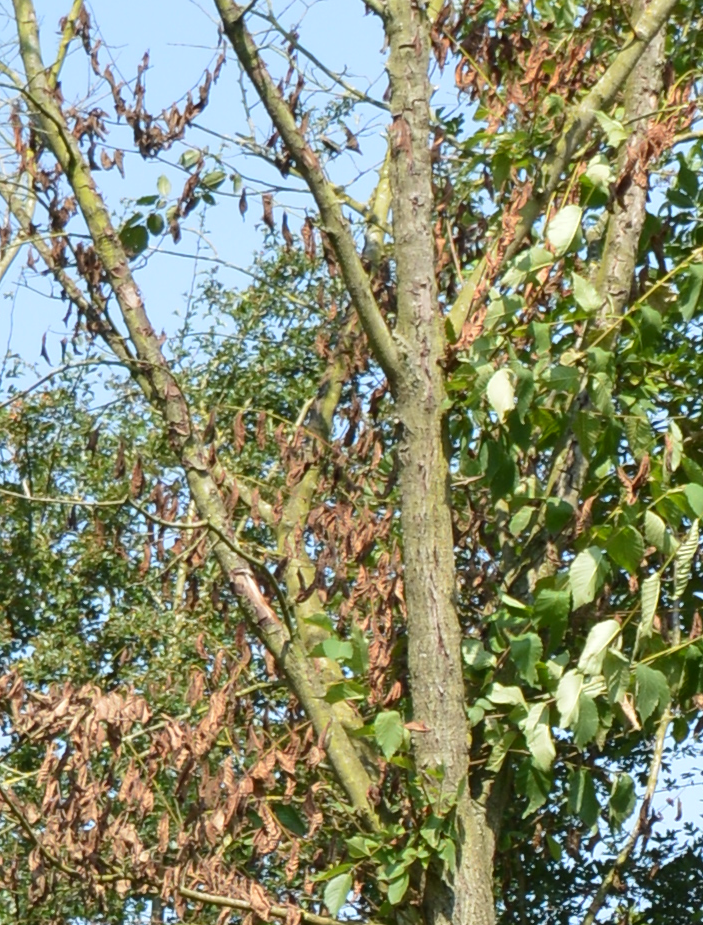We spent Sunday morning at the orchard site. I'd been intending for some time to get my wellington boots on and go along the river during the low summer water levels. As long as I avoided the obvious deeper areas I was okay and didn't get boots full of water. The banks are about 2.5 metres above the riverbed and quite steep, I pre-fixed a knotted rope to a tree so I'd be able to climb out again.
One side of the orchard is a road embankment which leads to a railway bridge from the river. The road was built across the floodplain when the railway was first built, so quite a substantial amount of landfill was used to create the "hill" leading to the bridge. The bottom section of our field which forms the river bank has also had some build up of fill to allow access to the road. It looks like the fill material was quarry chippings. Over the past 150 years this has been overgrown and no longer looks artificial. However when the river runs in full spate in the winter rains it fills almost to the top of our river banks. The river is a very different beast from the gentle brook of the summer months. The flooding causes erosion of the material dumped to form the ramp up to the road.
 |
| Wash-out of the river bank |
The washed out materiel is then dumped on the river bed. You can see the results of this in the above picture. The rubble is limestone chippings and appears to have built up above the normal level of the river bed. The picture below shows the roots of elm trees which have been exposed by the erosion of the bank during periods of river spate/flood.
 |
| Eroded tree roots on the river bank |
We'll be removing these compromised trees in the autumn and as mentioned in an earlier blog replacing them with live willow spiling to control the erosion of the river bank. During this inspection process I was assisted by two young apprentices. They seemed to be intent on making much splashing in the river.
 |
| Apprentice river bank surveyors |
We also managed some weed clearance, particularly the Himalayan Balsam which is an unwanted invasive species. This is going to be an on-going battle because the weed is is rampant upstream and down stream of our site. We can at least prevent the seeds being formed on our land. There are some legal responsibilities in dealing with this weed.
 |
| Himalayan Balsam on the river bank |

